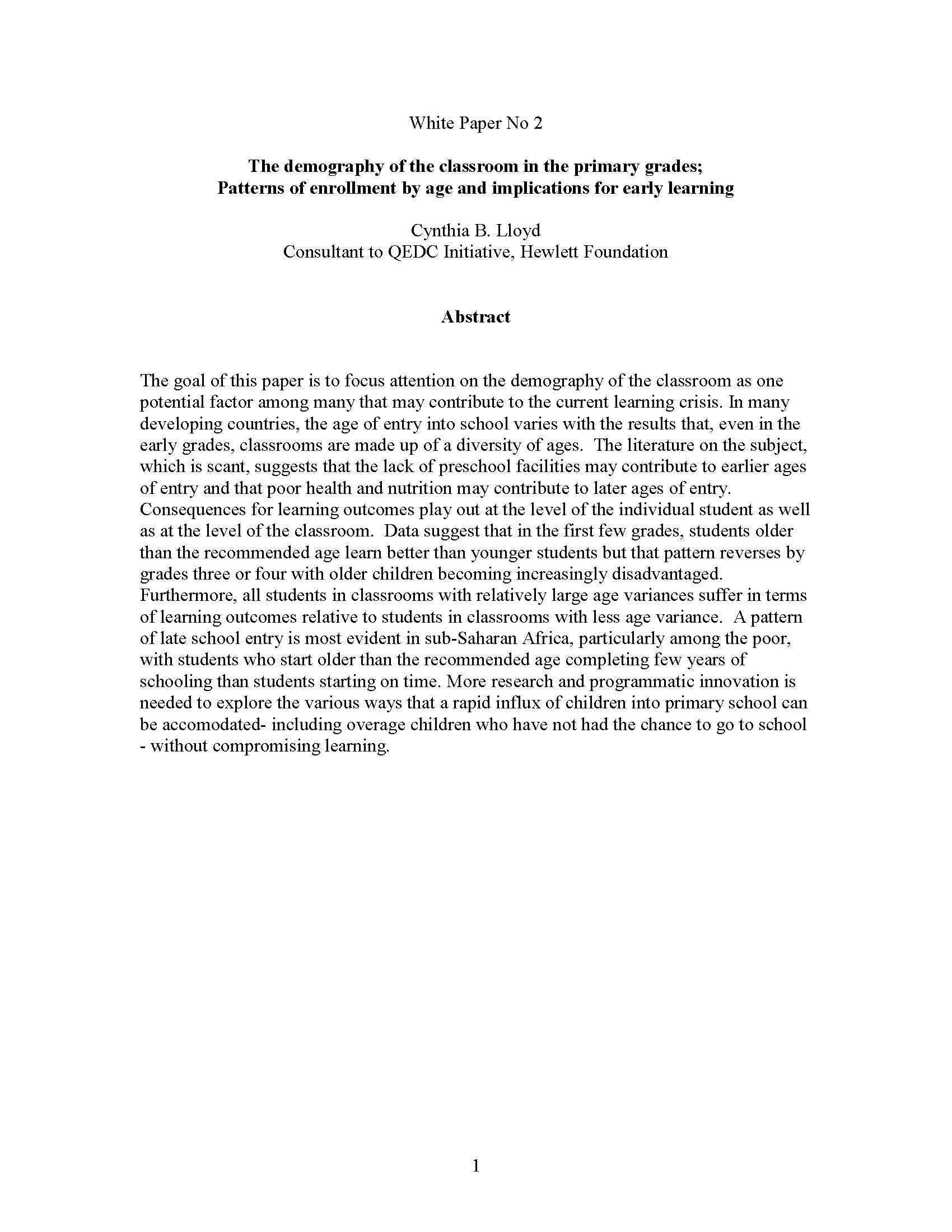The Demography of the Classroom in the Primary Grades: Patterns of Enrolment by Age and Implications for Early Learning
The goal of this paper is to focus attention on the demography of the classroom as one potential factor among many that may contribute to the current learning crisis. In many developing countries, the age of entry into school varies with the results that, even in the early grades, classrooms are made up of a diversity of ages. The literature on the subject, which is scant, suggests that the lack of preschool facilities may contribute to earlier ages of entry and that poor health and nutrition may contribute to later ages of entry. Consequences for learning outcomes play out at the level of the individual student as well as at the level of the classroom. Data suggest that in the first few grades, students older than the recommended age learn better than younger students but that pattern reverses by grades three or four with older children becoming increasingly disadvantaged.
Furthermore, all students in classrooms with relatively large age variances suffer in terms of learning outcomes relative to students in classrooms with less age variance. A pattern of late school entry is most evident in sub-Saharan Africa, particularly among the poor, with students who start older than the recommended age completing few years of schooling than students starting on time. More research and programmatic innovation is needed to explore the various ways that a rapid influx of children into primary school can be accomodated- including overage children who have not had the chance to go to school - without compromising learning.
Type of document : Transition
Country : Region
Year of publication : 2018
Advocacy :
Publisher :
